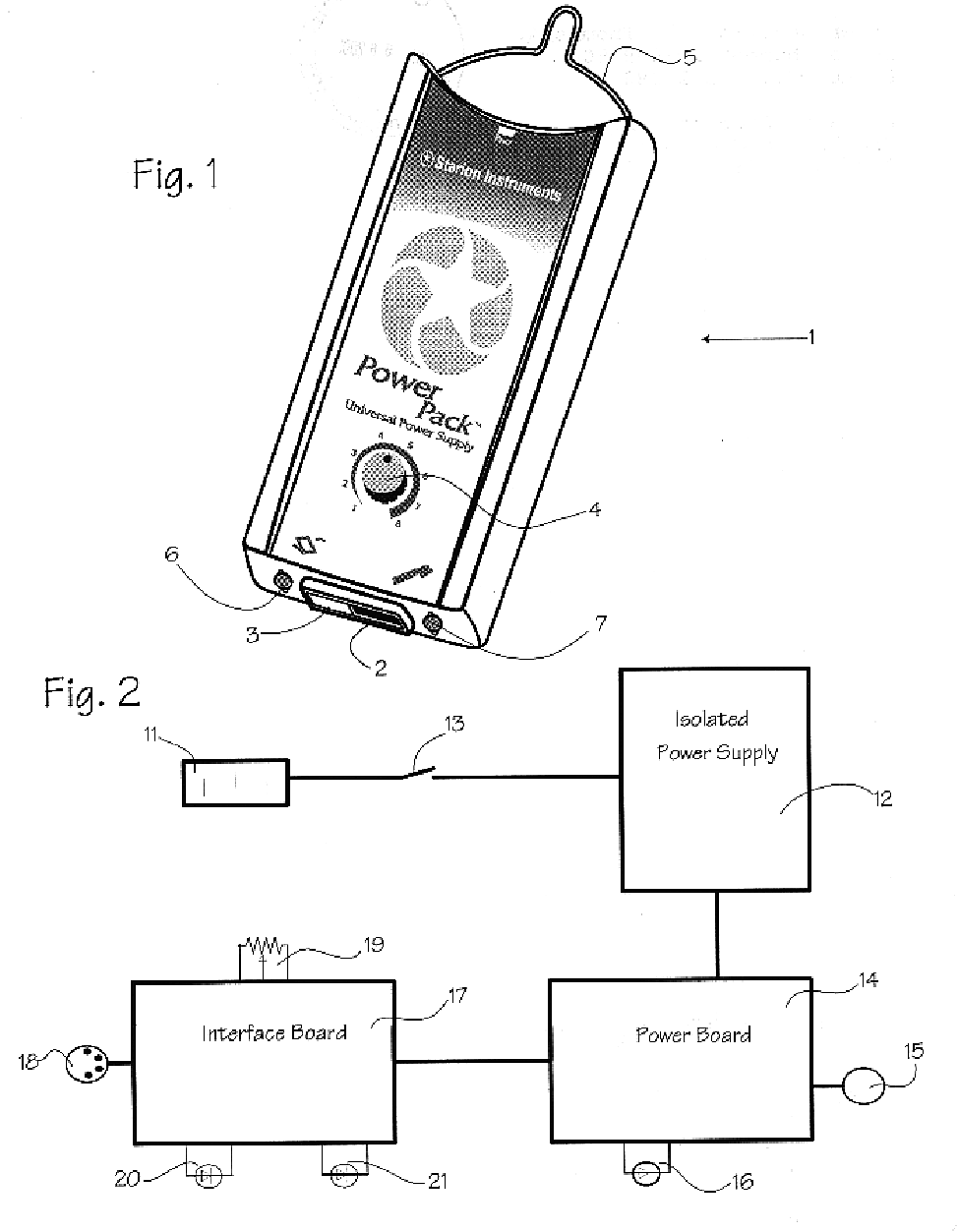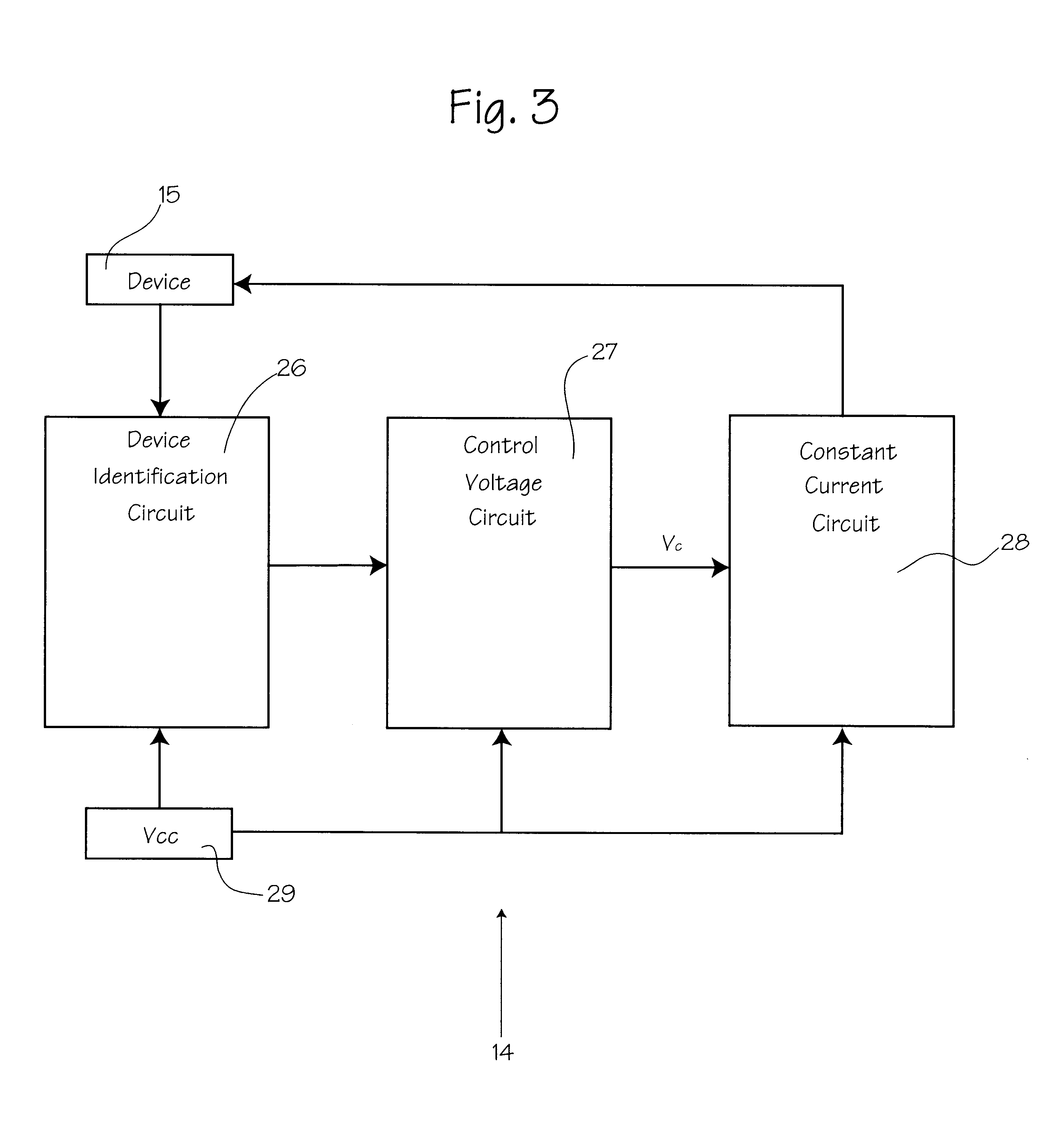Power supply for identification and control of electrical surgical tools
a technology for electrical surgical tools and power supplies, applied in the field of power supplies, can solve problems such as unintentional harm to patients, medical devices manufactured by one company, and medical devices that perform slightly differently than expected
- Summary
- Abstract
- Description
- Claims
- Application Information
AI Technical Summary
Benefits of technology
Problems solved by technology
Method used
Image
Examples
Embodiment Construction
FIG. 1 illustrates a physical power supply box 1. The power supply box 1 is typically a non-sterile, reusable, AC powered device designed for use only with certain instruments, medical devices, electrosurgical devices, or other electrical surgical tools such as thermal cautery devices. The power supply is connected to an AC power source. The power supply has an on-off switch 2, an AC power connector 3, an LED power indicator 4, a control knob 5, and a hanger 6 suitable for suspending the power supply on a support object, such as an IV pole. The power supply is also equipped with an input 7 for an interface board, control board, or switches, and an output 8 to the medical instrument. The supply has input requirements of 100 to 240VAC at 50 to 60 Hz and at 80W, has a maximum output of 32VA, a no load voltage of 5V DC, and is operated at a duty cycle of about 5 seconds on and 10 seconds off. The output current is in the range of 2.4A to 4.4A, depending on which instrument is used and o...
PUM
 Login to View More
Login to View More Abstract
Description
Claims
Application Information
 Login to View More
Login to View More - R&D
- Intellectual Property
- Life Sciences
- Materials
- Tech Scout
- Unparalleled Data Quality
- Higher Quality Content
- 60% Fewer Hallucinations
Browse by: Latest US Patents, China's latest patents, Technical Efficacy Thesaurus, Application Domain, Technology Topic, Popular Technical Reports.
© 2025 PatSnap. All rights reserved.Legal|Privacy policy|Modern Slavery Act Transparency Statement|Sitemap|About US| Contact US: help@patsnap.com



